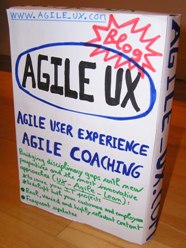Posted by jc-Qualitystreet on 2011/06/02
Here are the slides (English Version) of the presentation I gave last week at the agile France Conference to introduce Agile & Lean Management with a focus on the role of the Agile Manager:
Posted by jc-Qualitystreet on 2010/12/23
Agile marketing is a new mindset for marketers who adopt agile principles and practices in their daily activities (agile Marketing taskboard: why marketers love it?)
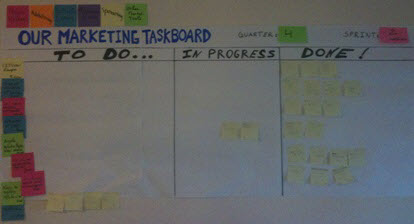
Agile Marketing Taskboard for Marketers
But Agile marketing is first the realization of IT projects for marketing using agile development This kind of project can only succeed and flourish in short cycles, with frequent deliveries, lead by FEEDBACK and open to change.
As pointed out recently Lubomira Rochet (Valtech), proposing the right product to the right person in the right context at the right time is key for digital marketing and to secure competitive advantage in a world where everything is accelerating.
To achieve it, the future of marketing will be primarily to deliver early, to test, test again and again, measuring and continuously adapt. A set of activities very closed to the Kaizen principle (continuous improvements), pillar of Lean thinking, and finally the real challenges which only an agile and lean approach can face with effectiveness and efficiency.
Good… but the agile marketing dynamics doesn’t come without impact and requires reflection.
Impact of Agile marketing 1… Undeniable benefits for Marketing and Business in general…
- Align IT and Business to the same Vision and objectives
- Deliver early and often to get the maximum of value and feedback
- Improve team morale, motivate and engage people
These are the major advantages of agile marketing but not only…
- enhancing the ability to influence the progress of the project, including changing priorities, better managing emerging needs and adapting to an environment of change (via an emergent product backlog);
- improving project visibility through visual management and extensive information radiators
- accelerating time to market through a single objective: getting the most valuable elements as soon as possible;
- getting a better adaptation to user needs through numerous opportunities for feedback, earlier and more frequent interactions, demonstrations and regular deliveries to meet new requirements (Test – Measure – Adaptation)…
are other benefits of agile marketing.
Impact of Agile marketing 2… Duties and the necessity to collaborate…
- Bring EVERYBODY TOGETHER, IT and Marketing, and establish an environment of trust
- Facilitate COOPERATION and foster effective COLLABORATION throughout the project (from the beginning to the end)
- Bring out a new role: the Product Owner with a set of responsibilities
- Empower teams
- Cut projects in short sprints (with a duration of 1 week, 2 or 3 weeks …)
- Establish a delivery cadence
- Test, Test, Test… Inspect and Adapt!
- Do just enough formalism, procedures and seek to eliminate wastes at all levels
Impact of Agile marketing 3… continuous reflection on a delivery cadence
On one hand, delivering earlier and more frequently can generate more revenue (new billing conditions, customer retention or acquisition …).
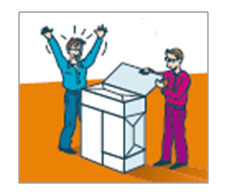
A successful Delivery !
It is also quite suitable for digital marketers that need to test again and again various options and multiple configurations to optimize their conversion rates, to meet user needs, or simply create effective « landing pages ».
On the other hand (and other contexts), switching from one to several releases a year entails additional work. It has a cost and must be prepared. Moving from 1 to 4 releases a year like SalesForce or going to 45 releases like PatientKepper is not easy task. Cost and technical considerations are crucial but other factors should be taken into account:
- The involvement and availability of teams (development, business, support, sales, operations)
- The synchronization effort required
- The capacity to work frequently on the required deployment artifacts
- The willingness of the users to change their habits, to learn new functions, to reinstall applications, to acquire new licensees
- The balance between the desire to initiate a continuous conversation with its users by offering them as regularly as possible new features and the risk of losing these innovations in the mass of multiple announcements about the Product .
- The natural rhythm of the market
So, agile marketing is challenging and involves coordination of many people. Great benefits can be expected but impacts inside or outside the organization don’t have to be underestimated.
Posted by jc-Qualitystreet on
… Because their goal is to create the maximum value for the customer or prospect, as quickly and efficiently as possible;
… Because the Agile and Lean approach is the best way to deliver the right message at the right time to the right person.
Agile marketing is first the realization of IT projects for marketing using agile development… BUT it is also, from another perspective, the adoption of agile values, principles and practices beyond software in Marketing. And that is NEW!

The agile marketing taskboard
After IT teams, this is now the marketing teams who want to become Agile. And some companies have even already taken the opportunity to adopt agility in their own business …
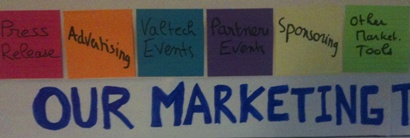
Agile Marketing Themes
The number of examples showing companies applying Agile & Lean practices beyond IT, such as in Communication, Training, Sales, or Marketing increases …
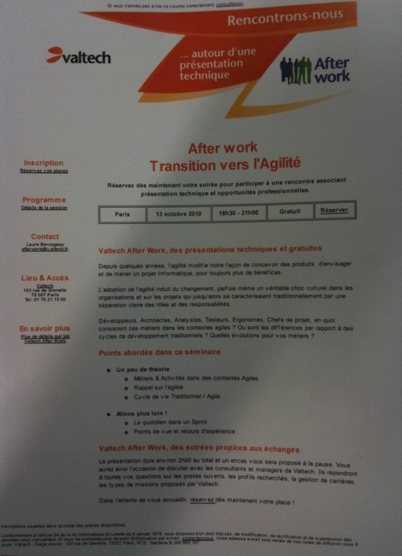
AfterworkAgile: An Agile marketing USER STORY
Via my French blog, I’ve heard about interesting projects outside the context of software development. In addition, my coaching activities enable me to work with Business people (often assigned to the role of Product Owner). Often, these inspiring and smart people quickly detect the potential benefits of Scrum or Kanban, in their daily activities.
See, adopt, adapt and replicate what really works!
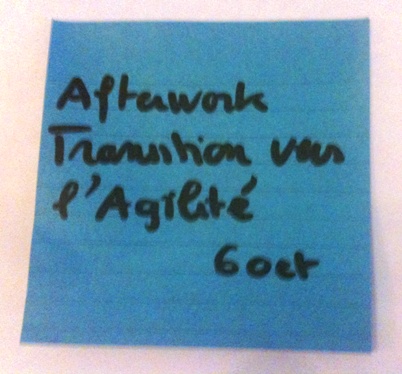
The same user story as a post-it placed in taskboard
The keys of Agile Marketing for marketing teams
- Adopt Agile planning with different levels of details and commitments:
- The Roadmap level (annual)
- The release Level (quarter)
- The Sprint level (with a duration of 3 weeks for Marketing Teams)
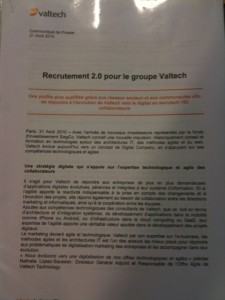
A Press Release User story (item of the sprint)
- Create a Taskboard to visualize and monitor the flow of activity (tasks) during the current Sprint

Taskboard - Quarter - Sprint
- Use visual Management (displaying the taskboard and important marketing tools for a better description, elicitation and understanding)
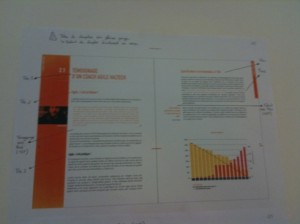
Visual management for marketing actions
- Use short cycles, called sprints. These short period of time (2 or 3 weeks) will also include Scrum ceremonials:
- Planning meeting: 1st day of the Sprint plan for all marketing activities for the next three weeks and the tasks to achieve it
- DailyScrum: Every day in the morning, no more than 10 minutes to synchronize, measure progress and identify impediments
- Sprint Review & Retrospective: Last day of Sprint, to inspect and adapt…
- Focus on Agile values (Courage, Communication, Feedback, Simplicity, Respect) for the team in its way of working together but also in its relations with internal and external partners….
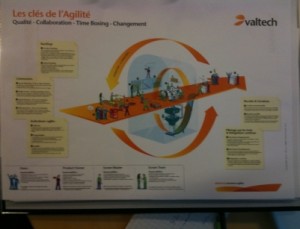
Keys to Agility... not only a User Story 🙂
- Use the user stories (categorized into themes and decomposed tasks that will be moved on the taskboard) for your marketing actions
- Gradually, calibrate your sprints by estimating your user stories, and at the end of each sprint, take the time for continuous reflection and improvement.
Posted by jc-Qualitystreet on 2010/12/05
But also a necessity!
The era of agile and lean management (see Management 3.0: Being an Agile Manager) is announced, and many factors contribute to the awareness and the birth of a sense of urgency that can serve as a starting point of willingness to change to lead middle managers to become agile managers.

The Agile Manager: Leadeship & Facilitation
The Enterprise environment
Fast, complex, competitive, changing, the external environment impacts the company itself. Pushed to review its governance, processes and valuable assets, the organization must also differentiate itself from its competitors in terms of knowledge, information sharing, skills and career management. The agile and lean enterprise is an obvious answer to these challenges, and middle managers, first line for these activities, have a major role to play. Whether supporting or opposing, they will be highly impacted by the fundamental changes introduced by an agile and lean approach.
The Rise of agility
Agile methods have spread into projects and in the everyday business life of people. Very popular in IT projects, agility is now everywhere and difficult to avoid. Managers can’t ignore it anymore. Moreover to understand what people actually do and how IT teams work, middle management will require the appropriate level of agile information and training… first steps toward change?
Concrete and visible results
It’s also difficult for middle management to ignore the benefits provided by Agile methods. Agility enables organization to reduce time to market, to improve product quality, to increase project visibility and productivity. Better team satisfaction and better end-user satisfaction are also observed. Agile methods have shown their efficiency and proved that it worked. Ten years after the Agile Manifesto, birth of Agility, agile and Lean practices continue to spread at a « unsustainable » pace 🙂 With the appropriate level efforts, an agile and lean approach gives fantastic results. So, why not applying some of these good practices and using them as a source of inspiration for management activities?
People expectations
Of course some needs and expectations of working people (achievement, recognition, empowerment…) are not new but the agile mindset is! An agile mindset grows within team members working with agile methods, and changes their relationship with others, with work and with their company. Collaboration, courage, feedback, simplicity and respect, the fundamental agile values are now also expected outside of the agile team, and primarly with middle management and hierarchy. Trust and feedback will be the keys.
From a generational point of view, the rapid growing of digital natives (people born after 1978) inside companies also changes the face of the enterprise and how the businesses operate. Digital natives need real time interactions & collaboration, networks, communities and a new management style. Once again, I have the feeling that agile management is a very good option to address the needs of this specific population.
HUMANITY, FACILITATION, COLLABORATION and LEADERSHIP seem to be the key characteristics of the AGILE MANAGER. And inspiration can be easily found in these few principles of lean management:
- Base your management decisions on a long term philosophy… even at the expense of short-term financial goals
- Grow leaders… who thoroughly understand the work, live the philosophy, and teach It to others)
- Develop exceptional people and teams… who follow your company’s philosophy
- Respect your partners and suppliers... by challenging them and helping them improve
- Go and see for yourself… to thoroughly understand the situation
- Make decisions slowly by consensus… thoroughly considering all options implement rapidly
- Become a learning organization... through relentless reflection (Hansei) and continuous improvement (Kaizen)
Posted by jc-Qualitystreet on 2009/01/09
VALUE, FEEDBACK & ADAPTATION, COURAGE, TRANSPARENCY: this is the Lean and Agile mindset.
More than ever focus on value and waste elimination are organizations’ high priorities : lean thinking must drive our projects. And it starts by your meetings !
ROTI (Return on Time Investment) is a quick and easy method to gauge the time spent on meetings or workshops, and to improve their effectiveness.
How does it work ?
Take 5-15 minutes at the end of the meeting to ask participants to rate their return on time invested, using the Fist of Five technique and this 1-5 scale:
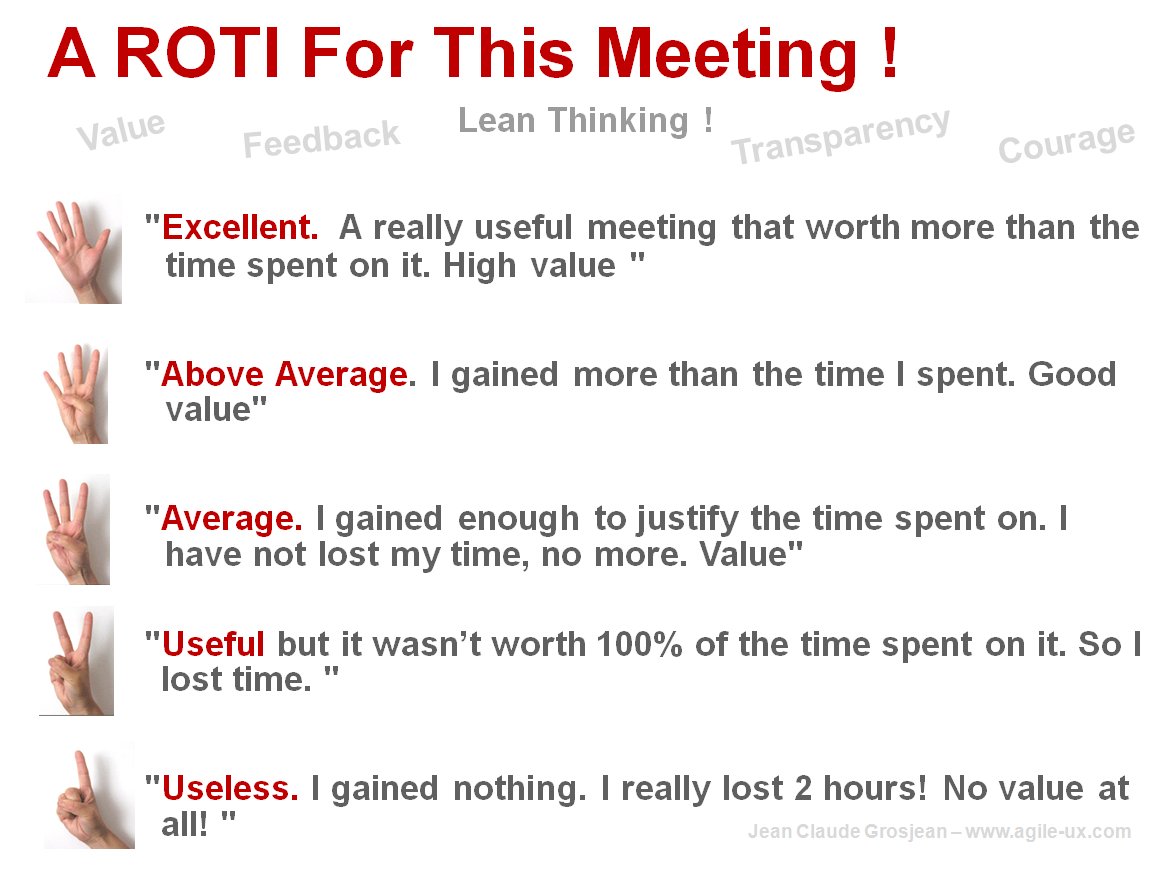
If you receive a majority of 1 or 2 fingers votes, you know there is a problem. Anyway, discuss with the participants who rated 1 or 2, discover why and react, plan to do something else, better, the next time.
I use the Return On Time Invested technique intensively (meetings, workshops, conferences), and really appreciate it. It’s VISUAL and provides you with IMMEDIATE FEEDBACK (but are you ready to receive it ?). The focus on what is really valuable but also commitment, empowerment, transparency, continuous Improvement are the key benefits I notice.
ROTI is quick, easy, sometimes funny, and works very well, even with top management.
Two good referrences (article and book):












